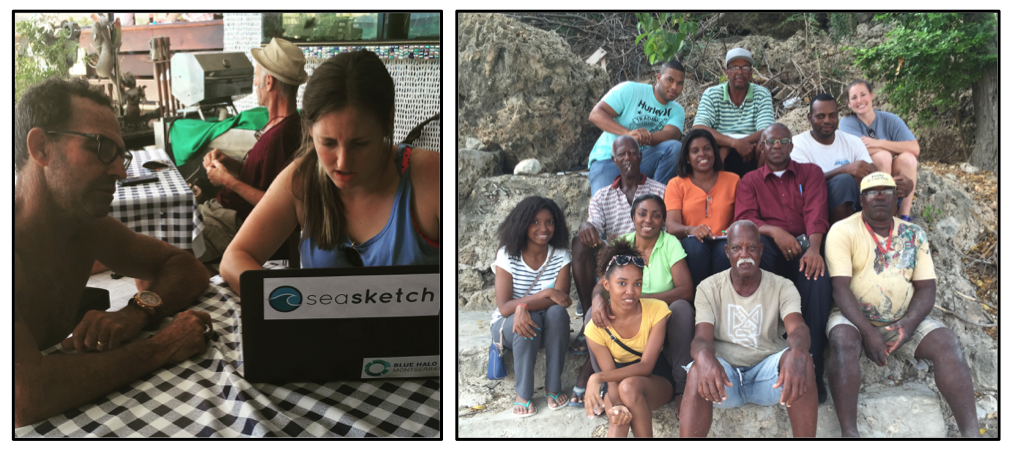Mapping with Stakeholders in Curaçao
by Bess Ruff
A seemingly improbable blend of Dutch, Spanish, and Portuguese influences, Curaçao, formerly part of the Netherlands Antilles, is as colorful on land as the marine life found just off its shores. Home to white sand beaches, colorful Dutch architecture, and the oldest synagogue in the western hemisphere, it’s of little surprise that this Caribbean island attracts large numbers of tourists. Numerous dive shops provide tourists the chance to view resplendent coral communities and marine wildlife. Curaçao’s rich coastline also supports a contingent of fishermen that catch marine fish for themselves and to sell to the community and local restaurants.
With so many individuals and stakeholders vying for the use of the near-shore ocean space, ocean zoning is a valuable tool to minimizing user conflicts while conserving Curaçao’s marine environment. As part of the Waitt Institute’s Blue Halo Initiative, several partners and contractors, including UCSB’s McClintock Lab, have been working to assess stakeholders’ opinions of the state of Curaçao’s oceans and the current management of these waters. SeaSketch is used to collect spatial data describing areas that are of particular importance for fishermen and divers so that these areas will be taken into consideration when an ocean management plan is developed in the future. Stakeholders can take the surveys online, or through facilitated interviews, sketching out where they partake in various activities in the ocean space, and assigning relative value to the many areas they fish, dive, boat or recreate.
On this recent trip to Curaçao, the McClintock Lab put an emphasis on reaching out to the fishing community. We found people to be receptive and generally interested in the SeaSketch application and Blue Halo Initiative. Trips across the island had us talking to fishermen about the type of gear they use, the location of their fishing sites, and the value of those fishing sites to their business. These interviews took place everywhere from the deck of a fisherman’s boat to a fisherman’s hut behind Curaçao’s desalination plant to one of those white sandy beaches used by tourists and fishermen alike. To use SeaSketch on the go, we used a Samsung Galaxy cell phone as a mobile wifi hotspot, with paper maps on hand to be used as a back-up mode of sketching out areas of ocean use. Most of the fishermen were quite welcoming, and we even got an invitation from a group of them to enjoy some grilled fish they had caught fresh that morning. And so we returned from Curaçao with more spatial data and, just as important, full stomachs.

(Left) Bess Ruff conducts an Ocean Use Survey. [Right] Group photo at a fishers meeting.
To learn more about how SeaSketch is used in mapping human dimensions of ocean use, check out our previous work supporting Barbuda Blue Halo and the Pacific Regional Ocean Use Atlas program with NOAA & BOEM.




